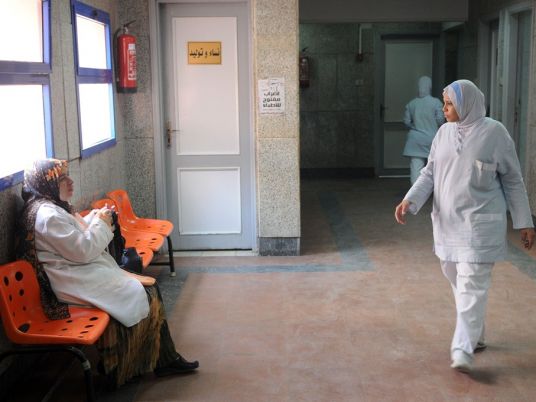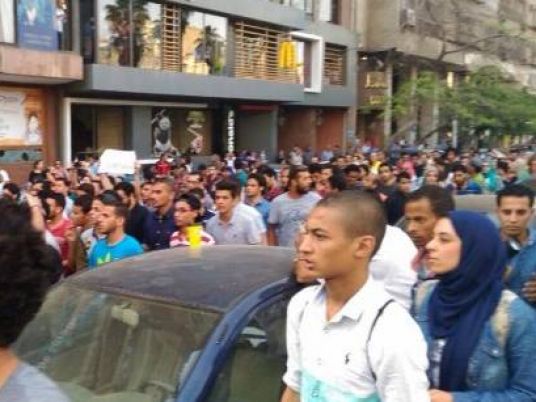
The scene has become familiar: streets splashed with rubble and broken glass; torn down sign posts leading to barricades of scrap metal manned by weary volunteers; exhausted doctors outside a makeshift field hospital; tents filled with young men and women socializing, resting, planning or doing daily chores.
This is a sit-in that has just seen an atrocity.
Over the past year, street battles have erupted on a near-monthly basis between anti-government protesters and various combinations of military, security forces and so-called “honorable citizens,” known to others as thugs. The latest round, near the Defense Ministry in Abbasseya, left at least 11 people dead and scores injured.
It is usually unclear how these clashes begin and how they escalate. When they do, they dramatically change the composition of the protest and the motivations behind it. But the latest round of violence, in Abbasseya, suggests that some protesters might be moving into a newly confrontational — and armed — form of resistance and self-defense, to the consternation of many activists.
The sit-in began on Friday, after supporters of disqualified presidential candidate Hazem Salah Abu Ismail moved their protest from in front of the Presidential Elections Commission to the Defense Ministry near Abbasseya. After some initial confrontations with plain-clothed individuals on Saturday, other political groups joined the sit-in, in front of Ain Shams University, which is adjacent to the ministry, to protest the military council’s rule and what they see as irregularities in the presidential elections process.
“The sit-in is no longer about Abu Ismail, it is against what will be fraudulent elections in the presence of corrupt judges on the elections commission and Article 28 of the Constitutional Declaration [which disallows appeals against the commission’s decisions],” said Abu Ismail supporter Tareq Hefny, who has been present since the sit-in in front of the elections commission.
Groups like the April 6 Youth Movement and Youth for Justice and Freedom, as well as non-affiliated individuals, joined the sit-in.
“I came to protest the SCAF's decision that the constitution be written while they are in power,” said Mohamed Gad, a 22 year-old member of the Abdel Moneim Abouel Fotouh presidential campaign. As Gad pointed out, the majority of the sit-in does not comprise of Salafis or just Abu Ismail supporters.
After the clashes that began early Wednesday morning and continued until noon, many at the Abbasseya sit-in were left pondering the bloody turn of events, and what it means for them. They were especially upset with the complete absence of security to stop the violence until Wednesday at noon, after many had already been killed.
“I started coming two days ago, to increase pressure on the rule of the military council, but stayed when people began to get attacked. This morning thugs came into our camps and literally slaughtered some of those in the sit-in when they left,” said Rehab Ali, a 17-year-old high school student.
Ali comes to the sit-in behind her parent’s back, but as a strong supporter of the April 6 Youth Movement, it is important for her to be at sit-ins, whatever the cause, when people’s lives are threatened. “If people like me don’t go to the front lines, the thugs will advance and have their way with any revolutionary,” she said.
Early Wednesday morning, the protesters were attacked by armed assailants, beginning with tear gas and rock throwing, and escalating to birdshot fire and live ammunition, according to eyewitnesses. The fighting spilled onto the streets of the neighborhood’s residential areas as protesters and their attackers exchanged blows using a variety of weapons.
Eyewitnesses say that during an ebb in the violence, protesters who left the sit-in to go to work or grab breakfast were attacked, and some were killed on the way to the metro station. Presidential candidate and legal activist Khaled Ali said on Wednesday that in total 20 bodies were identified from both ends of the barricade.
“At one point in the early morning I saw seven people gunned down in front of me by a machine gun,” said Mohamed Samy, an activist at the sit-in.
The sit in was relatively small, with around 500 constant participants, but once the clashes started, the protesters gathered support from various corners. Even Al-Azhar scholars showed up, led by the imam of Al-Azhar Mosque, Salah Nassar, to express their condemnation of the attacks and their solidarity with the protesters.
The introduction of violence to protests can change their character, making people behave in ways they might not normally. Allegations of protesters wreaking havoc among Abbasseya residents, vandalizing private property using weapons, and torturing those they captured, have only increased the rift between the protesters and their neighbors as well as marred the image of a “peaceful protest.”
At the same time, the prevalence of weapons among the protesters took a more pronounced turn. “Masked men appeared on our side with automatic weapons and fought back the thugs who were attacking us with the same weapons,” said Ahmad Aggour, a 24-year-old activist. On the night that eye-witnesses claim they were being shot at indiscriminately within the camps, this was initially welcome news for Aggour, but not for long.
“Once they started running after the thugs in the side streets of Abbasseya, I realized it could put innocent civilians from the neighborhood at risk,” he added.
Aggour overheard some of the protesters at the sit-in say that the masked gunmen were coming to their aid. “A group of protesters in the sit-in supported having automatic weapons on their side because they feel like since the revolution there has been no security or law enforcement by the government,” said Aggour. He and many other protesters voiced their rejection of bearing arms.
Among the protesters, the kinds of weaponry used allegedly for self-defense have been upgraded from previous sit-ins. It is not uncommon to see large knives brandished when scouts at the entrances sound off a security threat. Some even had homemade birdshot guns called fard.
While many of those participating in the sit-in do not deny that protesters might have at times been guilty of these allegations, they see it as a more complex situation.
“The fard has become incredibly common in Egypt. It is difficult to blame someone for carrying it when they saw their friends killed by an AK-47 machine gun just the night before,” said Islam al-Eissawy, who witnessed much of the clashes.
Eissawy said that some protesters may have indeed engaged violently with some Abbasseya residents, but that they were mostly overzealous reactions after snipers shot into the camps, killing some protesters. “It is very difficult to control yourself after seeing a young friend's brains fall out of their head in front of you,” said Badreya Farghali, who assists at the field hospital and saw her colleague at the hospital, Abul Hassan Ibrahim, a third-year medical student at Ain Shams university, shot in the head while trying to assist the wounded.
Many known activists have objected to the perceived turn to violence among the protesters.
“This isn't the first time we've been shot at with live ammunition, using rocks and Molotov cocktails put a realistic distance between defending our existence and asking for martyrdom,” activist Alaa Abd El Fattah wrote on Twitter, trying to explain that revolutionaries were able to stand to live ammunition without taking arms and escalating to the point of reciprocal armed combat.
Abd El Fattah has been critical of some of the alleged violent practices from protesters at the sit-in, including the reports of torturing captives and calls to carry weapons.
“The weapons here are mostly what we caught other people with. Otherwise, it is very unlikely that anyone from here will ever antagonize people from Abbasseya. It would be very stupid to be violent to an entire neighborhood that is right next to us,” said Sameh Ahmed al-Masry, formerly a member of the Hazem Salah Abu Ismail campaign and currently a self-proclaimed spokesperson for the sit-in.
After Wednesday's clashes, many other activists who were against the sit-in joined in protest of the bloodshed. “Sit-ins have always been a legitimate expression of anger, especially after lives are lost,” said prominent blogger and activist Wael Khalil.
Many protesters are saying they will continue to hold their sit-in, despite statements from SCAF deputy leader Sami Anan suggesting that the military may be willing to leave power a month earlier than previously stated.
At the same time, tensions between Abbasseya residents and protesters are increasing. According to many shopkeepers and coffee shop owners who refused to be identified, people in the neighborhood are fed up with living in a state of fear that clashes could once again spill into the side streets and terrorize innocent residents. “Even if, as the protesters say, the attacks are instigated by government hired thugs,” said one coffee shop owner, “the sit-in has to end.”




